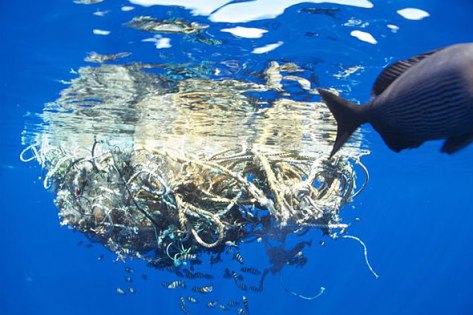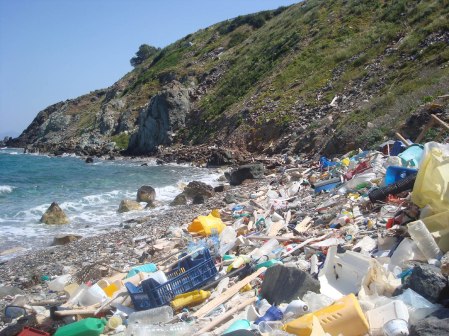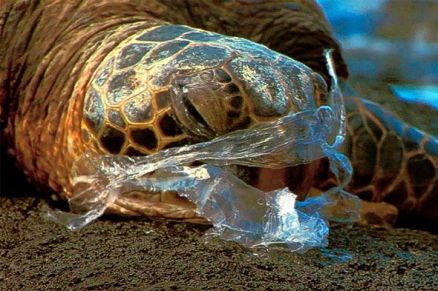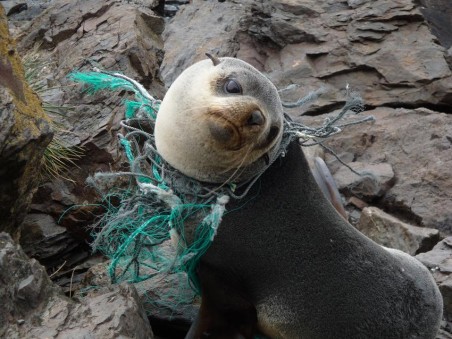Estimates of the overall financial damage of plastics debris in the world’s oceans causing harm to marine ecosystems stands at $13 billion USD each year.
In the polar regions, scientists have recently found tiny pieces of plastic trapped in sea ice. Transported by ocean currents across great distances, these contaminated particles eventually become a source of chemicals in our food.
A large and unquantifiable amount of plastic waste enters the ocean from littering, poorly managed landfills, tourist activities and fisheries. Some of this material sinks to the ocean floor, while some floats and can travel over great distances on ocean currents—polluting shorelines and accumulating in massive mid-ocean gyres.
Communities of microbes have been discovered thriving on microplastics at multiple locations in the North Atlantic. This “plastisphere” can facilitate the transport of harmful microbes, pathogens and algal species. Microplastics have also been identified as a threat to larger organisms, such as the endangered northern right whale, which is potentially exposed to ingestion through filter-feeding.
Wildlife Conservation Film Festival, Inc.
Christopher J. Gervais, Founder & CEO
Christopher@WCFF.org
Facebook.com/WCFForg
LinkedIn: Wildlife Conservation Film Festival
Twitter: @WCFF_org
Instagram: WCFF_org




